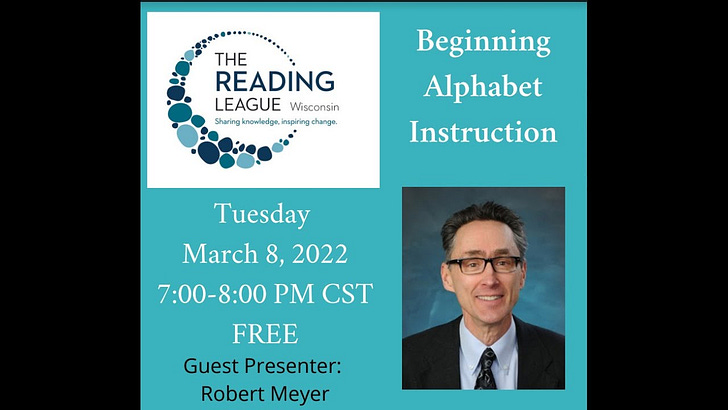The Wisconsin Reading League posted a truly fascinating YouTube session recently on the alphabet (see below). I’m not sure the SoR was quite ready to take on Zoo Phonics and its commercial siblings1, especially not the close association between pictographic pedagogy and letter learning in preschool. SoR is vehement, adamant, vitriolic about the damage three-cueing pedagogy is doing. Eyeballs on the letters. No bird walks. ooops, picture walks. I’m excerpting five minutes or so of audio to highlight a few points.
It reminded me of Myron Jantzen and Lynda Peddy, Myron a magical kindergarten teacher, Lynda a legendary early childhood literacy leader in California during the good old days of Whole Language, writing, and portfolio assessment. Pictographs to link narratives with words and letters was their superpower. I just don’t understand the angst in the zeitgeist about picture walks and guided reading.
If you watch the YouTube—this one requires eyeballs on screens for full effect—you’ll see that embedded pictographs can have a significant effect on letter-sound paired associate learning, primarily as a mnemonic device. The mental link—integrated among the image of a zebra in a subsystem cognitive schema well stocked with sensory detail, stripes, eyes, ears perked up; the image of two stacked horizontal lines with a right to left diagonal written top down left to right, right to left, left to right; and with the phonemic image you produce with a steady stream of air vibrating the vocal cords passing through a small aperture at the front of your mouth created by folding and tensing your tongue—is stable, durable, and instant.
If you can evoke zebra in sensory-motor memory, see Z on a screen or page, and speak zebra, by phonemic modus ponens and with a little experience you know that Z represents the phoneme /z/. Preschoolers can do it. Remember that phonemes, like images, are stored inside the body in long term memory. Phonemes are idealized versions of legally sound behavior. Creating links in memory between iconic and auditory memory traces, well, that’s pretty much all phonics is about.
Embedded pictographs cross the boundaries of the simple view in hordes. SoR asserts that explicit instruction in phonemic awareness should be taught in the absence of letters, eyes closed, though manipulatives are permitted. Explicit instruction in phonics should be done with words first in isolation, including fake words, nonsense words, apart from pictures. Embedded mnemonics cram letters, digraphs, diphthongs, you name it, inside pictures inside letters intended to evoke phonemes and then ask kids to cognitively manipulate them. Embedded pictographs work by weaning kids from the need to see the Z embedded in the picture of a zebra to say “Zeeee.” Naked Z in the eye becomes /z/ in the mouth by passing quickly through the zebra🦓 sensory schema. Voila.
I hope I’m making sense. I think you get the picture.
https://www.teacherspayteachers.com/Browse/Search:picture%20mnemonics


